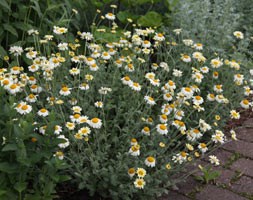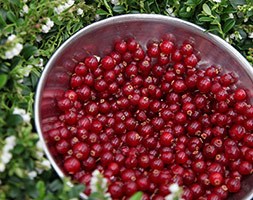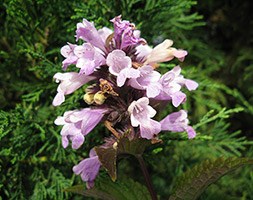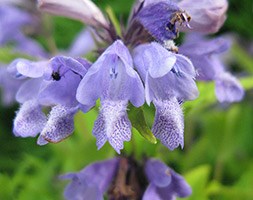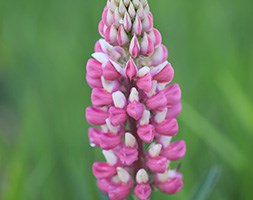Price reductions at Crocus
by Sarah - December 6th, 2015.Filed under: Crocus, Price Reductions.
Crocus has cut the price of these products
Phlox paniculata ‘Early Pink Dark Eye’ (phlox) was £6.99 now £3.99
Position: full sun or partial shade Soil: fertile, well-drained soil Rate of growth: average Flowering period: July to September Hardiness: fully hardy This lovely phlox is earlier into bloom than many of the others, so it makes an excellent choice if you want to stretch the season. It is also relatively compact, so perfect for patio pots or front of border positions – and it rarely succumbs to mildew. Garden care: Support with bamboo canes, brushwood or ring stakes before the flowers appear. Phlox are greedy plants, so apply a mulch 5-7cm (2-3 in) deep of well-rotted garden compost or manure in early spring. Shear off the spent flowers to prevent reseeding. Cut down to the ground in autumn and lift and divide large clumps in autumn or spring.
Anthemis ‘Tetworth’ (anthemis) was £5.99 now £3.99
Position: full sun Soil: moderately fertile, well-drained soil Rate of growth: fast Flowering period: June to August Hardiness: borderline hardy Noted for its long flowering period, this pretty perennial will produce its semi-double, daisy-like flowerheads from late spring to early autumn. Useful for filling gaps towards the front of a sunny, well-drained border. Garden Care: Lightly trim the plant after the first flush of flowers to encourage more to come. Cut it back harder when the flowering has finished to keep the plant nice and bushy. Avoid excessively wet soils in winter.
Phlox paniculata ‘Eva Cullum’ (perennial phlox) was £5.99 now £3.99
Position: full sun or partial shade Soil: fertile, moist but well-drained soil Rate of growth: average Flowering period: June to September Hardiness: fully hardy Trusses of deep pink flowers with darker pink centres are produced freely over several months from midsummer. This long-flowering perennial is perfect for a mixed or herbaceous border in sun or partial shade. For best results it requires a moist soil and some support, particularly in exposed areas. Garden care: Phlox are greedy plants, so apply a mulch 5-7cm (2-3 in) deep of well-rotted garden compost or manure in early spring. Shear off the spent flowers to prevent reseeding. This cultivar is more resistant to powdery mildew, but if the leaves do show signs cut down to the ground and dispose of the affected foliage, but do not compost it. Clear away the debris around the plant to reduce the chances of reinfection. Cut down to the ground in autumn. Lift and divide large clumps in autumn or spring.
Vaccinium vitis-idaea ‘Red Candy (PBR)’ (cowberry) was £4.99 now £3.99
One of the photos on this page shows the plant with gift wrap. This is not included in the price, however you may add gift wrap (for an additional charge of £4.95) during the order process. Position: full sun Soil: prefers moist, but freely draining acidic soil but will grow in sandy or normal soil Rate of growth: fast-growing Other features: edible but acidic red berries Hardiness: fully hardy Clusters of pink-flushed white flowers are followed by shiny red berries from mid- to late summer. These berries have a tart flavour, but can be harvested and eaten straight away (if you have a sweet tooth try crushing them up with a bit of sugar), or cooked and sweetened to make jam or compote. They appear on a low-growing, evergreen shrub, which will slowly spread to form a generous, leafy clump. Originating from the Arctic and alpine regions of Northern Europe and North America, this plant is incredibly tough and robust. Garden care: Prepare the ground well before planting by digging in lots of composted organic matter. Prune in winter, cutting out dead or damaged branches. In spring, feed with sulphate of ammonia, sulphate of potash and bonemeal and top-dress with ericaceous compost.
Lilium regale (regal lily) was £5.99 now £4.49
Position: full sun Soil: well-drained, including chalk, enriched with leaf mould, or a loam-based potting compost such as John Innes no. 2 Rate of growth: average Flowering period: July Hardiness: fully hardy One of the most popular varieties of lily, and its not hard to see why. The hug e trumpet-shaped white flowers are flushed with pink, smell divine and provide great wafts of scent throughout the garden when they are open. Alternatively bring them inside as cut flowers and they will fill your home with their heady perfume. Lilies are one of the all time favourite summer-flowering bulbs as th ey will look superb in any garden scheme. The RSPCA have reported that all parts of lilies can be fatal to cats, including the flower, leaves and pollen. For more information visit Rspca.org Garden care: Lilies are best planted in autumn when the bulbs are still plump, but they can still be planted in spring. Between August and March, choose a sunny spot where the plant can keep its feet in the shade. Plant 15 – 30cm apart and around 15 – 20cm deep in a well-drained soil, enriched with well-rotted organic matter or leaf mould, using a marker to minimise any unnecessary disturbance. Stake with ring stakes or bamboo canes in spring before the flowers appear. Deadhead the faded blooms and cut the stems back to ground level at the end of autumn.
Nepeta subsessilis ‘Sweet Dreams’ (catmint) was £6.99 now £4.99
Position: full sun or partial shade Soil: moist, well-drained soil Rate of growth: average Flowering period: July to September Hardiness: fully hardy An unusual catmint that forms an upright clump of aromatic foliage, which is crowned from midsummer, with spikes of pink-flushed white flowers that are magnet for bees and butterflies. The flowers are held on the spikes by burgundy bracts and these remain attractive long after the flowers have faded. Garden care: Regular deadheading will prolong the flowering period. After flowering has finished cut the stems back to keep the plant compact. Lift and divide large clumps in spring, replanting divided specimens with lots of well-rotted organic matter. If powdery mildew becomes a problem prune out the affected areas.
Nepeta subsessilis (catmint) was £6.99 now £4.99
Position: full sun or partial shade Soil: moist, well-drained soil Rate of growth: average Flowering period: July to September Hardiness: fully hardy Chunky spikes of bright blue flowers are held on erect stems above the mound of aromatic dark green leaves. This is a tough and easy to grow plant that is useful for making an impact in a sunny border from midsummer to early autumn. It will mix particularly well with most shades of pink and purple and also looks good with silvers. Garden care: Cut back after flowering has finished to keep the plant compact. Lift and divide large clumps in spring, replanting divided specimens with lots of well-rotted organic matter. If powdery mildew becomes a problem prune out the affected areas.
Penstemon ‘Schoenholzeri’ (beard tongue (syn. P. ‘Firebird’)) was £6.99 now £4.99
Position: full sun or partial shade Soil: fertile, well-drained soil Rate of growth: average Flowering period: July to October Flower colour: bright scarlet Hardiness: frost hardy (will need winter protection in cold areas) Bold spikes of large, tubular-bell-shaped scarlet flowers, 7cm long are produced from midsummer to mid-autumn. A fiesty penstemon that is ideal for the middle of a sunny mixed or herbaceous border. To prevent losses due to adverse winter weather choose a well-drained site and apply a dry mulch around the crown of the plant in autumn. Garden care: Remove the faded blooms regularly to prolong flowering. Apply a dry mulch around the base of the plant to protect the roots from frost damage and cut back in spring when new shoots appear low down on the stem. Lift and divide congested clumps in spring. Try taking cuttings in July and early August. Fill a small seed tray with coarse horticultural sand and water it well. Take the cuttings in the cool of the day, choosing non-flowering side shoots about two inches (5cm) in length. If there are flower buds, pick them off. Trim the cuttings below a node (where the leaf joint is) and remove or reduce any large leaves to lessen transpiration. Plunge them into the sand so that two-thirds of the cutting is submerged and place the tray in a cool, shady position for several weeks. Then pot up individually into compost, such as John Innes no 1. You can also leave your cuttings in situ until next spring, although they will need protection from frost.
Lupinus ‘The Chatelaine’ (Band of Nobles Series) (lupin) was £6.99 now £4.99
Position: full sun or partial shade Soil: moderately fertile, well-drained, slightly acid, sandy soil Rate of growth: average Flowering period: June to July Flower colour: salmon-pink and white Other features: the seeds can cause severe discomfort if ingested Hardiness: fully hardy The upright flower spike creates a spectacular column of colour when the pink flowers, each with a white standard, open from early to midsummer. Ideal for creating vertical interest in a mixed or herbaceous border, their soft colouring means they are very easy to intermingle with other shades. Garden care: Stake with bamboo canes in spring before the flowers appear and deadhead the faded blooms to encourage a second flush of flowers.








